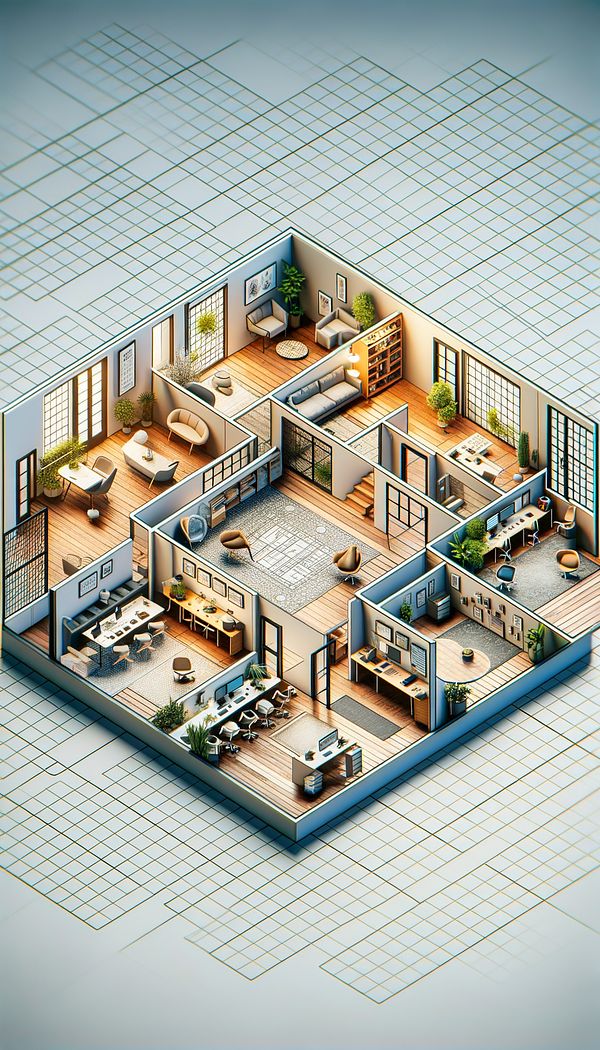What is Space Planning?
Space planning is a crucial aspect of interior design that involves arranging the physical layout of spaces within a building to optimize their use and functionality.
Description
Space planning is an essential process in interior design that focuses on the allocation and division of interior space to meet the requirements of an individual or a group effectively. It’s not just about the physical arrangement of furniture or decor but about understanding the flow of space, how people will move through it, and how it catizes to their needs and activities. Effective space planning takes into account several factors including the purpose of the spaces, the need for privacy or openness, accessibility, and the relationship between different areas within a structure.
Proper space planning can significantly enhance the comfort, efficiency, and aesthetics of any interior environment. It involves making informed decisions about the layout of rooms, the placement of windows and doors, and the organization of furniture and equipment. Through careful consideration of these elements, interior designers aim to create spaces that are both functional and visually appealing.
Space planning is also integral to assuring that environments adhere to building codes and regulations, particularly in regards to safety and accessibility. It requires a balance between aesthetic preferences and practical considerations, often involving compromise and innovation to achieve the best possible outcome.
Usage
In a home, space planning might involve determining the best layout for a living room to maximize seating while ensuring a clear path for foot traffic. In an office, it could entail arranging workstations to facilitate collaboration among employees while also providing sufficient privacy. Retail spaces use space planning to guide customer movement and highlight merchandise effectively.
FAQs
-
Why is space planning important?
Space planning is important because it enhances the functionality, efficiency, and aesthetic appeal of an interior space, making it better suited to the needs and activities of its users.
-
What factors influence space planning?
Factors that influence space planning include the purpose of the space, user needs and activities, privacy requirements, accessibility, the relationship between different areas, and compliance with building codes and regulations.
-
How does space planning contribute to sustainability?
Space planning can contribute to sustainability by optimizing the use of resources, reducing waste, and ensuring areas are designed for long-term use and adaptability.
Practical Application
When embarking on a space planning project, start by defining the primary function of each area. Consider how people will use the space, the traffic flow, and any specific requirements such as accessibility or acoustics. Use this information as a foundation to layout furniture and equipment in a way that maximizes the space's potential, both aesthetically and functionally.
-
Furniture Types599 articles
-
Space Planning & Layout134 articles
-
Decorating Principles & Elements330 articles
-
Accessibility & Ergonomics30 articles
-
Construction & Building86 articles
-
Barrel BackBarrel back refers to a curved, rounded backrest on a chair or sofa, resembling the shape of a half barrel.
-
Dutch DresserA Dutch Dresser is a type of sturdy and practical furniture piece consisting of shelves above and drawers or cupboards below.
-
Tight SeatA tight seat is a style of upholstery where the seat cushion is built directly into the chair or sofa frame.
-
Iron BedAn iron bed is a bed frame made primarily out of iron.
-
BalustradeA balustrade is a row of small columns topped by a rail.
